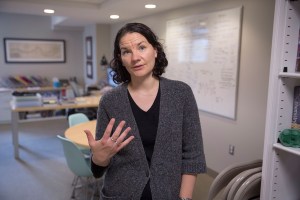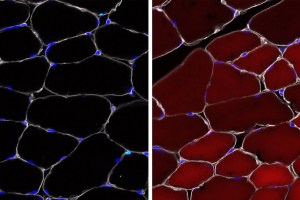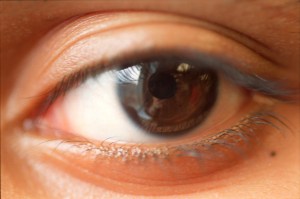Tag: basic research
-
Science & Tech
Uncovering how cells become organs
Tiny sensors are embedded into stretchable, integrated mesh that grows with the developing tissue, allowing scientists to track how cells grow into organs.
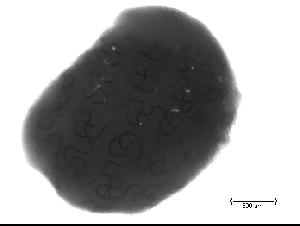
-
Science & Tech
A way to make Mars habitable
Researchers from Harvard University, NASA’s Jet Propulsion Lab, and the University of Edinburgh suggest that regions of the Martian surface could be made habitable with a material — silica aerogel — that would mimic Earth’s atmospheric greenhouse effect.
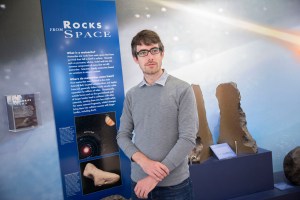
-
Science & Tech
A product idea with legs
Dakota McCoy, in collaboration with David Haig, led a group of researchers at Harvard studying the black spider and its ultrablack coat with microlenses that could lead to innovations in solar panels and sunglasses glare.
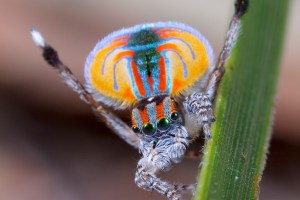
-
Science & Tech
So you think he can dance?
Snowball the dancing cockatoo is the subject of a study by Radcliffe fellow and Tufts neuroscientist Ani Patel, who suggests the bird’s ability to move in time to music is connected to the way humans groove to a beat.
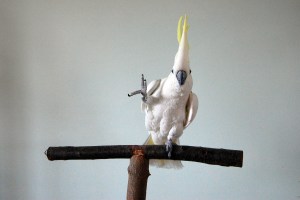
-
Health
Debunking old hypotheses
Biology Professor Cassandra G. Extavour debunks old hypotheses about form and function on insect eggs using new big-data tool
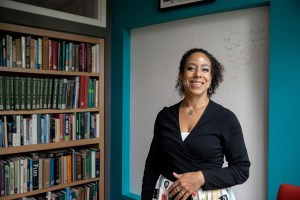
-
Science & Tech
Single letter speaks volumes
Scientists have used an optimized version of the CRISPR-Cas9 gene-editing system to prevent hearing loss in so-called Beethoven mice, which carry a genetic mutation that causes profound hearing loss in humans and mice alike.
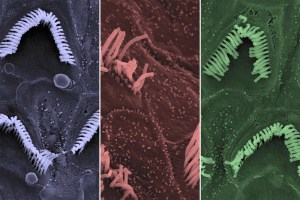
-
Campus & Community
One thing to change: Think more like children
Abraham “Avi” Loeb, the Frank B. Baird Jr. Professor of Science, argues that academia shouldn’t just be about proving theories, but about exploration.

-
Science & Tech
Speeding up single-cell genomics research
Harvard researchers have devised a time-saving method that makes it possible to speed up the process of profiling gene regulation in tens of thousands of individual human cells in a single day, a development that promises to boost genomics research.
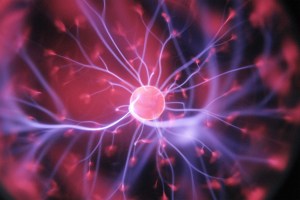
-
Health
Fears arise that new federal fetal-tissue restrictions will hobble a ‘workhorse’ of research
With the Trump administration halting fetal tissue research at two prominent scientific institutions and new plans to review such research elsewhere, Harvard Medical School Dean George Daley discussed the importance of research using these tissues, which would otherwise be discarded, in creating vaccines and treatments and enhancing our understanding of human biology.
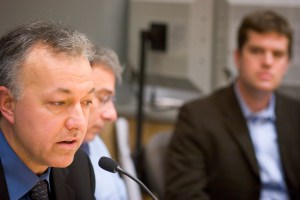
-
Science & Tech
Leave those calluses alone
A running-studies pioneer takes a look at walking, with and without shoes, and gives calluses a thumbs-up.
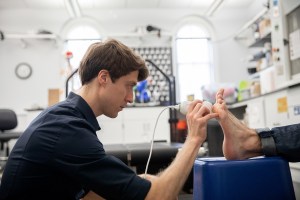
-
Health
Chemists’ breakthrough in synthesis advances a potent anti-cancer agent
Chemists at Harvard and Eisai, a Japanese pharmaceutical company, have synthesized halichondrin, a potent anti-cancer agent found naturally in sea sponges. Because of the molecule’s “fiendishly complex” design, the feat took three decades.
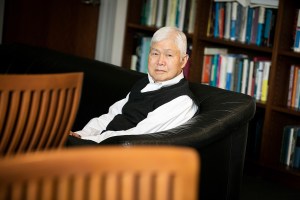
-
Science & Tech
Beyond the cloud
Every day, more and more information is filed in less and less space. Even the cloud will eventually run out of space, can’t thwart all hackers, and gobbles up energy. Now, a new way to store information could stably house data for millions of years.
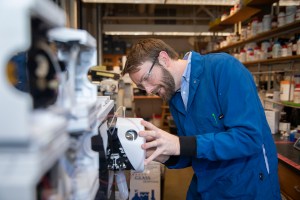
-
Science & Tech
Forward thinking
Research led by scientists at Harvard and the Broad Institute has optimized the process of making human brain “organoids” — miniature 3D organ models — so they consistently follow growth patterns observed in the developing human brain.
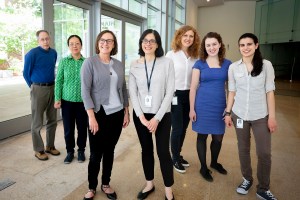
-
Science & Tech
A new vision for neuroscience
For decades scientists have been searching for a way to watch a live broadcast of neurons firing in real time. Now, a Harvard researcher has done it with mice.
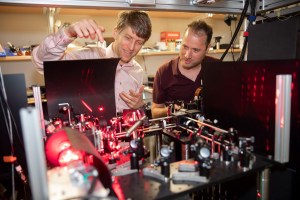
-
Science & Tech
Researcher connects the dots in fin-to-limb evolution
With an innovative technique called anatomical network analysis, clear patterns emerge that help solve the puzzle of how fins became limbs 420 million years ago.
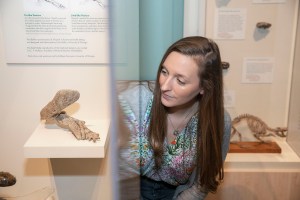
-
Science & Tech
Learning why cancer drugs work (or don’t)
Assistant Professor Brian Liau of the Chemistry and Chemical Biology Department has answered the question of why some new drugs for acute myeloid leukemia don’t work by combining CRISPR gene editing with small-molecule inhibitor treatments in a technique he calls CRISPR-suppressor scanning.
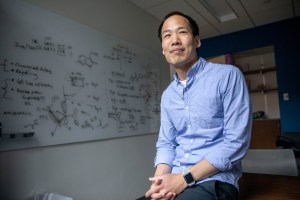
-
Science & Tech
The evolution of flightless birds
Based on an analysis of the genomes of more than a dozen flightless birds, including an extinct moa, a team led by Harvard researchers found that while different species show wide variety in the protein-coding portions of their genomes, they appear to turn to the same regulatory pathways when evolving flight loss.
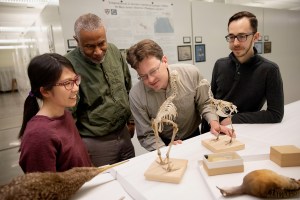
-
Science & Tech
Easy on the eyes
New computer program uses artificial intelligence to determine what visual neurons like to see. The approach could shed light on learning disabilities, autism spectrum disorders, and other neurologic conditions.

-
Science & Tech
AI model predicts TB resistance
A Harvard undergrad, working with Harvard Medical School scientists, has designed an artificial intelligence model that predicts tuberculosis resistance to 10 most commonly used drugs. The new model outperforms previous machine-learning tools, and incorporating it into clinical tests could dramatically enhance early detection and prompt treatment of drug-resistant TB.
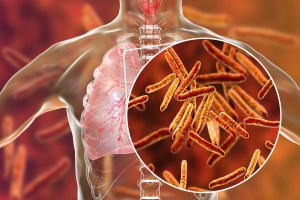
-
Science & Tech
Day of the golden jackal
The surprising success story of the golden jackal in Europe holds lessons about nature’s resilience and about how nature might respond to the evolutionary pressure exerted by humans as we change the natural landscape. The Gazette spoke with doctoral student Nathan Ranc for insight.

-
Science & Tech
Written in the bones
Harvard doctoral students offered a glimpse of the future of evolutionary inquiry, outlining projects that touch on the human pelvis, butterfly hybrids, field and forest mice, and the mystery of an ancient pile of bones.

-
Science & Tech
The genetics of regeneration
Led by Assistant Professor of Organismic and Evolutionary Biology Mansi Srivastava, a team of researchers is shedding new light on how animals perform whole-body regeneration, and uncovering a number of DNA switches that appear to control genes used in the process.
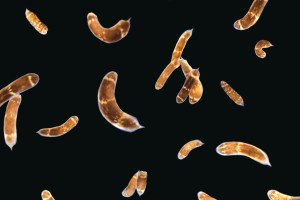
-
Science & Tech
Sensors go undercover to outsmart the brain
Harvard scientists have created brain implants so similar to neurons that they actually encourage tissue regeneration in animal models. They may one day be used to help treat neurological diseases, brain damage, and even mental illness.
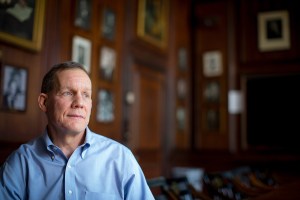
-
Science & Tech
Seeing things in a different light
Harvard researchers are using a chemical process known as triplet fusion upconversion to transform near-infrared photons into high-energy photons. The high-energy photons could be used in a huge range of applications, including a new type of precisely targeted chemotherapy, in which low-energy infrared lasers that penetrate deep into the body could be used to transform…
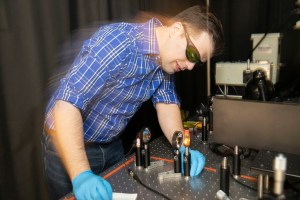
-
Science & Tech
Making sense of how the blind ‘see’ color
A new Harvard study suggests that although the congenitally blind experience abstract visual phenomena such as rainbows and color differently, they still share with the sighted a common understanding of them.
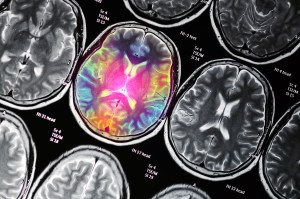
-
Science & Tech
Brainy birds
A new study shows that African grey parrots can perform some cognitive tasks at levels beyond those of 5-year-old humans. The results not only suggest that humans aren’t the only species capable of making complex inferences, but also point to flaws in a widely used test of animal intelligence.
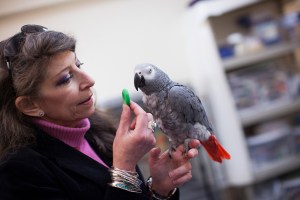
-
Science & Tech
Facing crocodiles head-on
Despite often being portrayed as living fossils that have remained virtually unchanged for millions of years, a new Harvard study shows crocodiles have repeatedly altered their developmental patterns, leading to much of the diversity found in modern, living crocodiles.
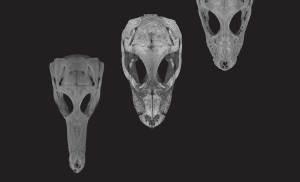
-
Science & Tech
Solving colibactin’s code
In an effort to understand how colibactin, a compound produced by certain strains of E. coli, may be connected to the development of colorectal cancer, Harvard researchers are exploring how the compound damages DNA to produce DNA adducts.
